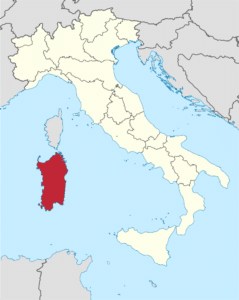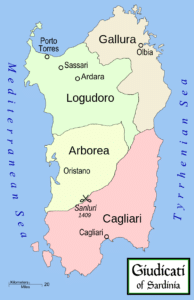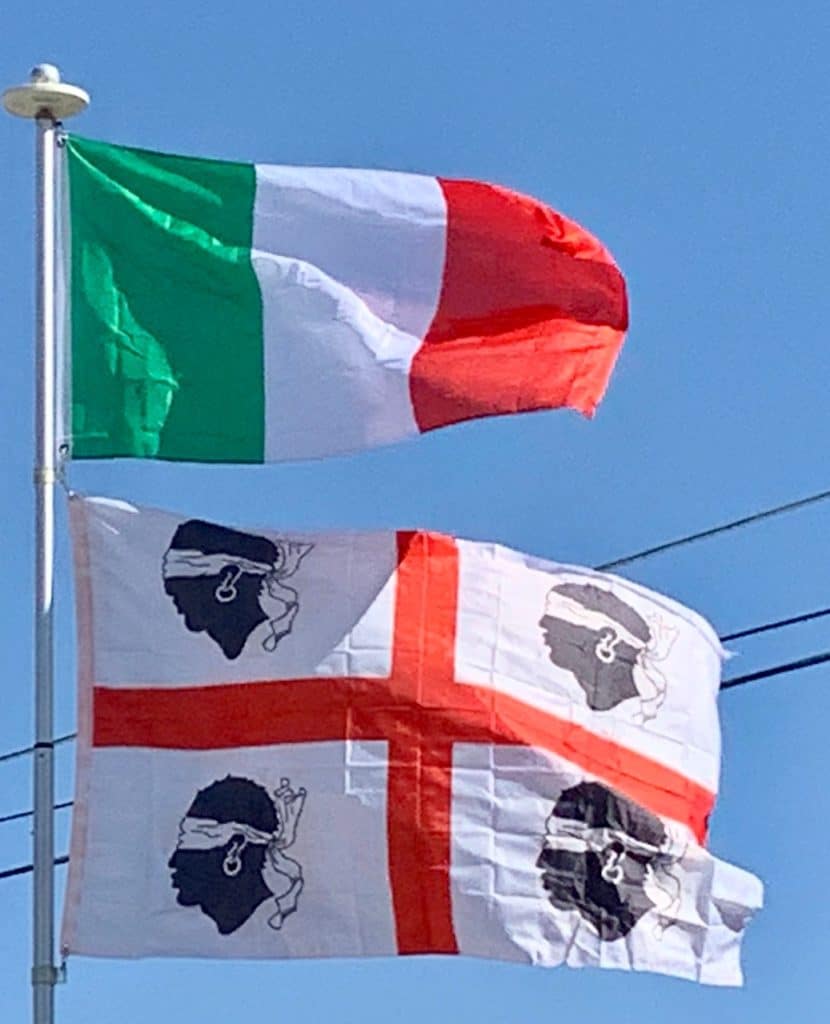Introduction:
Sardinia is the second-largest island in the Mediterranean Sea, after Sicily, and one of the 20 regions of Italy. It is located west of the Italian Peninsula, north of Tunisia and immediately south of the French island of Corsica.

It is one of the five Italian regions that have been granted some degree of domestic autonomy by special statute. Its official name is Regione Autonoma della Sardegna. It is divided into four provinces and a metropolitan city. The capital of the region of Sardinia — and its largest city — is Cagliari. Sardinia’s indigenous language and the other minority languages spoken on the island (Sassarese, Gallurese, Algherese Catalan and Ligurian Tabarchino) are officially recognized by the regional law as having “equal dignity” with Italian.
Sardinia has been inhabited since the Paleolithic. The island’s most iconic civilization is the indigenous Nuragic, which flourished from the 18th century BC to either 238 BC or the 2nd century AD in some parts of the island, and to the 6th century AD in that part of the island known as Barbagia. After a period in which the island was ruled by a political and economic alliance between the Nuragic Sardinians and the Phoenicians, parts of it were conquered — by Carthage in the late 6th century BC — and by Rome in 238 BC. The Roman occupation lasted for 700 years. Beginning in the Early Middle Ages, the island was ruled by the Vandals and the Byzantines. In practice, the island was disconnected from the scope of Byzantium’s territorial influence, so the Sardinians provided themselves with a self-ruling political organization, which led to the formation of the kingdoms known as the four Judicates. The Italian maritime republics of Pisa and Genoa struggled to impose political control over these indigenous kingdoms, but it was the Iberian Crown of Aragon which, in 1324, succeeded in bringing the island under its control, consolidating into the Kingdom of Sardinia. This Iberian kingdom endured until 1718, when it was ceded to the House of Savoy and later politically merged with the other Savoyard domains on the Italian Mainland. Later, during the period of Italian unification, the Savoyards expanded their territory to include the entire Italian peninsula. They renamed their territory the Kingdom of Italy in 1861, and it was reconstituted as the present-day Italian Republic in 1946.

Due to the variety of Sardinia’s ecosystems, which include mountains, woods, plains, stretches of largely uninhabited territory, streams, rocky coasts, and long sandy beaches, Sardinia has been metaphorically described as a micro-continent. In the modern era, many travelers and writers have extolled the beauty of its long-untouched landscapes, which retain vestiges of the Nuragic civilization.
History:
Prehistory:
Sardinia is one of the most geologically ancient bodies of land in Europe. The island was populated in various waves of immigration from prehistory until recent times.
The first people to settle in Sardinia during the Upper Paleolithic and the Mesolithic came from Continental Europe; the Paleolithic colonization of the island is demonstrated by the evidences in Oliena’s Corbeddu Cave; in the Mesolithic some populations, particularly from present-day Tyrrhenian coast of Italy, managed to move to northern Sardinia via Corsica. The Neolithic Revolution was introduced in the 6th millennium BC by the Cardial culture coming from the Italian Peninsula. In the mid-Neolithic period, the Ozieri culture, probably of Aegean origin, flourished on the island spreading the hypogeum tombs known as domus de Janas, while the Arzachena culture of Gallura built the first megaliths: circular tombs. In the early 3rd millennium BC, the metallurgy of copper and silver began to develop.
